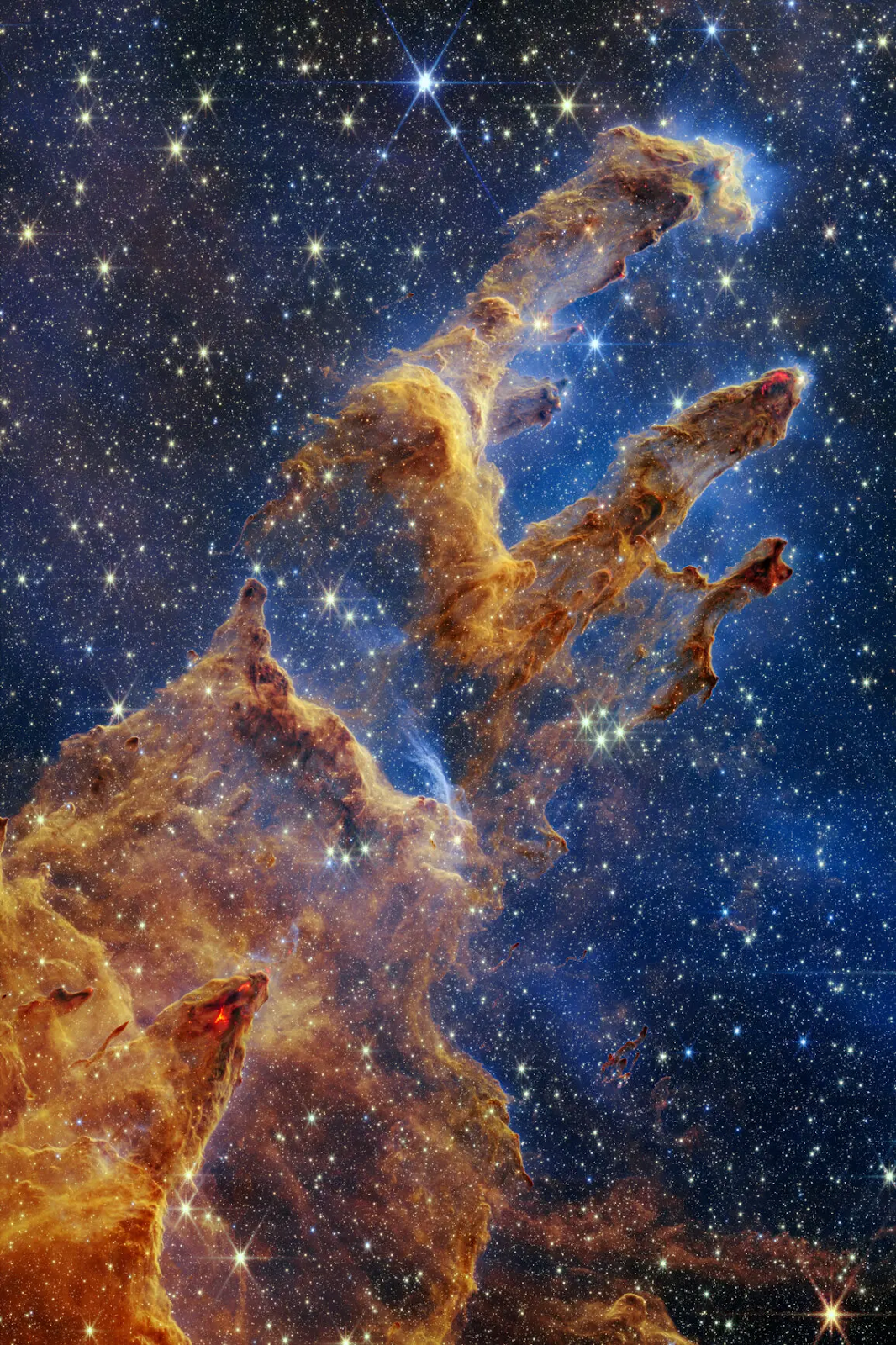Pillars of Creation: James Webb Telescope | 22 Oct 2022
For Prelims: James Webb Telescope, Hubble Telescope, Pillars of Creation.
For Mains: James Webb Telescope.
Why in News?
A lush, highly detailed landscape- the iconic "Pillars of Creation" has been caught by NASA's powerful James Webb Telescope.
What is Pillars of Creation?
- About:
- It is a vista of three looming towers made of interstellar dust and gas.
- These iconic Pillars of Creation is located in the centre of the Eagle Nebula (it is a constellation of stars), which is also known as Messier 16.
- The images show vast, towering columns of dense clouds of gas and dust where young stars are forming in a region some 6,500 light-years from Earth.
- At the ends of several pillars are bright red, lava-like spots. These are ejections from stars that are still forming, only a few hundred thousand years old.
- The pillars were made famous by the Hubble Space Telescope, which first captured them in 1995 and then again in 2014.
- Significance:
- The new image will help researchers revamp their models of star formation by identifying far more precise counts of newly formed stars, along with the quantities of gas and dust in the region.
What is the James Webb Space Telescope?
- About:
- The telescope is the result of an international collaboration between NASA, the European Space Agency (ESA) and the Canadian Space Agency which was launched in December 2021.
- It is currently at a point in space known as the Sun-Earth L2 Lagrange point, approximately 1.5 million km beyond Earth’s orbit around the Sun.
- Lagrange Point 2 is one of the five points in the orbital plane of the Earth-Sun system.
- Named after Italian-French mathematician Josephy-Louis Lagrange, the points are in any revolving two-body system like Earth and Sun, marking where the gravitational forces of the two large bodies cancel each other out.
- Objects placed at these positions are relatively stable and require minimal external energy or fuel to keep themselves there, and so many instruments are positioned here.
- It's the largest, most powerful infrared space telescope ever built.
- It's the successor to Hubble Telescope.
- It can see backwards in time to just after the Big Bang by looking for galaxies that are so far away that the light has taken many billions of years to get from those galaxies to our telescopes
- Objectives:
- It will examine every phase of cosmic history: from the Big Bang to the formation of galaxies, stars, and planets to the evolution of our own Solar System.
- The goals for the Webb can be grouped into four themes.
- The first is to look back around 13.5 billion years to see the first stars and galaxies forming out of the darkness of the early universe.
- Second, to compare the faintest, earliest galaxies to today’s grand spirals and understand how galaxies assemble over billions of years.
- Third, to see where stars and planetary systems are being born.
- Fourth, to observe the atmospheres of extrasolar planets (beyond our solar system), and perhaps find the building blocks of life elsewhere in the universe.
UPSC Civil Services Examination Previous Year Question (PYQ)
Q. Launched on 25th December, 2021, James Webb Space Telescope has been much in the news since then. What are its unique features which make it superior to its predecessor Space Telescopes? What are the key goals of this mission? What potential benefits does it hold for the human race? (2022)

